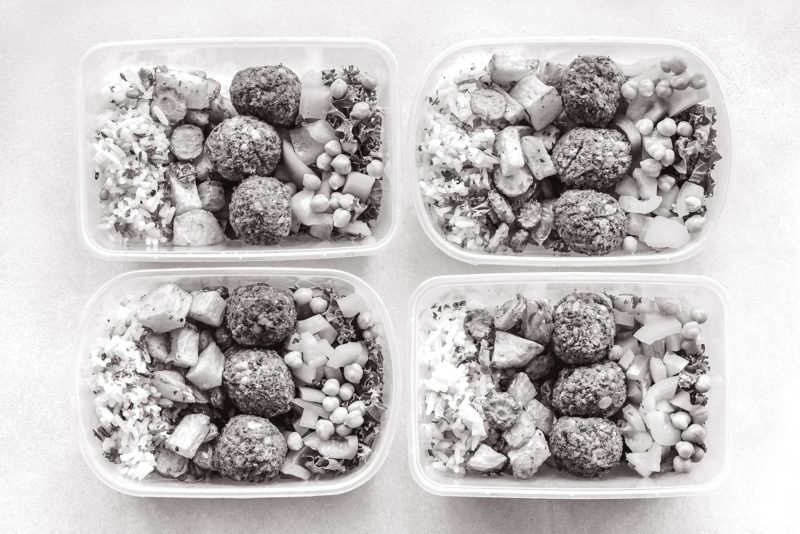A nutritious meal is crucial to maintaining good health and minimizing chronic diseases. However, putting together healthy meals that satisfy your nutritional needs can be challenging.
This article will walk you through the process of preparing nutritious meals that will satisfy your daily nutritional requirements.
What is meal planning?
Meal planning can be considered our “daily food guide”, it is the process of creating a schedule of meals that, given the resources at hand, will provide each person in the household with adequate nutrition. It aids you in making decisions about your daily and mealtime food intake.
The following practices are part of meal planning:
- Managing eating out and special occasions
- Managing food types and portions
- Incorporating dietary fiber
- Understanding appropriate serving sizes
- Incorporating favorite recipes
- Making grocery lists
- Creating food budgets
- Organizing nutritious meals that take into account household preferences
- Maximizing the use of leftovers
Benefits of meal planning
Preparing your meals in advance can be beneficial as follows:
Saves money
Meal planning is a great way to save money because it reduces the need to eat out at restaurants, especially fast food.
Additionally, meal planning can reduce the cost of groceries by letting you make more conscious choices. Making a plan enables you to identify the exact ingredients you will need throughout the week so you can prepare meals easily.
Sustainable for the environment
Meal planning is beneficial for the environment because you will be less likely to purchase excessive ingredients or fresh produce, thanks to the notes you have based on the meal plan. Overall, it is great for budgeting, especially when you factor in ingredients you already have on hand and it also minimizes the risk of wasting food.
Saves time
It is surely difficult to be hungry and realize you have nothing prepared. Meal planning makes life easier and creates less stress because you don’t have to worry about what you are going to eat for breakfast, lunch, or dinner every time.
Improves diet quality and variety
It has been proven that the amount of time spent preparing meals at home was linked to indicators of a higher-quality diet, such as significantly more frequent consumption of vegetables, salads, fruits, and juices.
Due to portion control, prepping meals in advance may also help with weight loss, especially if you are batch cooking. Furthermore, it might make you feel satisfied but not stuffed. Planning ahead allows you to use various ingredients and put together a more balanced plate, which makes you feel full and satisfied.
The risk of dying from any cause is significantly increased when individuals are frequently eating out. People who frequently ate less than one takeout meal per week lived longer than those who frequently went out to eat with two meals or more per day. Takeout food has higher amounts of sodium, total fat, saturated fat, and calories than home-cooked food.
That explains why it’s crucial to plan your meals to make sure you fulfill the nutrients your body needs. If you are unsure of how to start meal planning, we provide you with some simple and easy steps to get you started.
Steps to meal planning success
Meal planning may seem inconvenient to those who are unfamiliar with it, but this is typical because we approach it from the outcome; when all the recipes have been chosen, all the groceries have been purchased, and a week’s worth of dinners have been successfully prepared.
However, you will be glad if you know the strategies and start to develop a habit of meal planning. Here are some of the steps to get you started:
1. Create a plan that works for you
Different people have different ideas of what meal planning looks like. Some people make a grocery list based on the meals they’ll prepare and eat throughout the coming week. Others prepare and portion out all of their meals for the upcoming week using meal prep containers, so they would not need to cook. And for some, it combines the two.
Select the meal-planning strategy that works best for you and your family. The main goal is to plan your meals for the entire week, so you can prepare as much or as little in advance as you wish.
2. Make a menu
Every week, set aside a specific time to determine how many meals you will actually need to prepare, and try to make a meal that is nutritious. Plan servings based on the size of your household as well. Try to select a recipe that has common ingredients to minimize food waste and save money. Maintain this schedule every week.
3. Shop for ingredients
Look in your refrigerator and pantry for both items that need to be used and staples that you already have. Make a list of the remaining groceries you need. It is also good to stock up on basic ingredients and spices to make it easier for you when you prepare your meal.
4. Follow your plans but remain flexible
After all of that effort, you naturally want to follow your plan, but there will inevitably be days when unforeseen circumstances occur or you lack the energy to complete your plan. That’s alright; just make a backup arrangement to ensure that your ingredients are not completely wasted. For example, you can preserve your food to minimize food waste.
Read more: Food Preservation: A Path to Sustainability
In conclusion
To maintain a healthy and balanced diet, meal planning is essential. Aside from saving time and money, it also enables mindful food selection and reduces food waste. You can make sure food is giving your body the right nutrients you need for optimum health by making meal plans in advance.
By using these helpful tips, you can create a meal plan that works for you and your family, minimizing the stress and hassle of deciding what to eat. Start making plans now to move toward a happier and healthier life.
If you would like to know more about meal planning, check out the Household Management Science Labs. Using the research of the Institute for Life Management Science, the lab produces courses, certifications, podcasts, videos, and other helpful tools. Visit the Household Management Science Labs today.
Photo by Ella Olsson on Pexels



